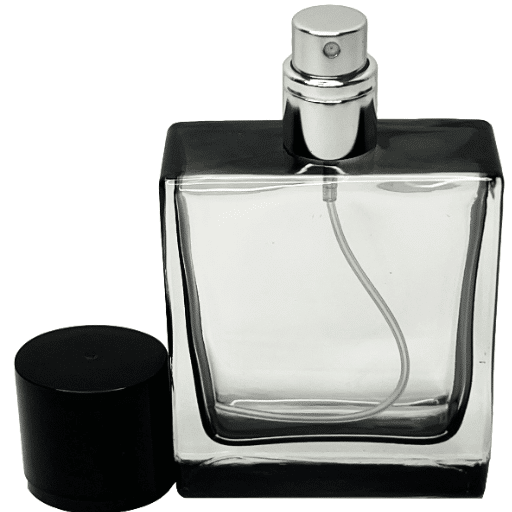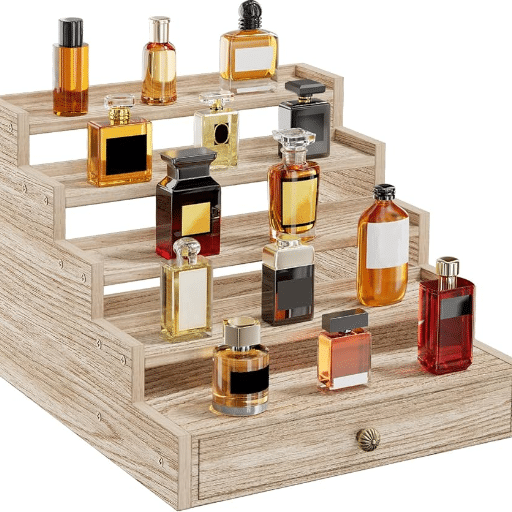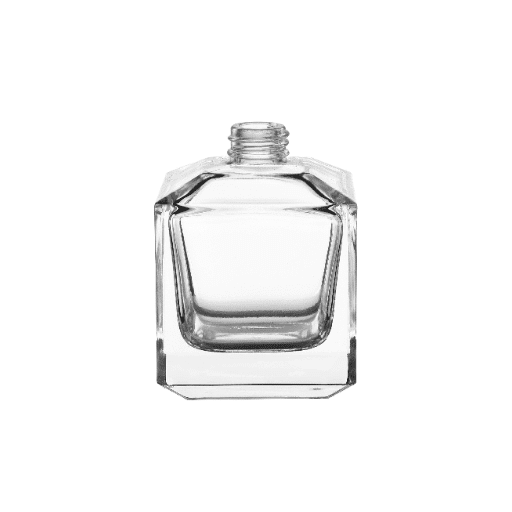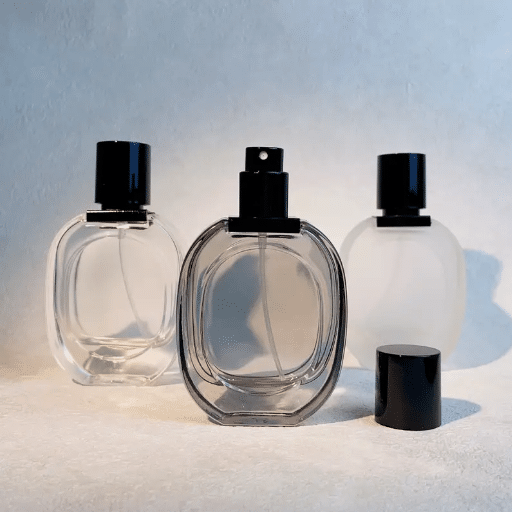The world of high-end fragrances extends far beyond the soft scent guised in a glass bottle into an entire multisensory experience where packaging is the very first point of contact between a product and the customer. In essence, the art of making luxury perfume boxes is a world within itself wherein aesthetics, functionality, and branding combine synergistically to form a story of their own-even before the fragrance opens up to a consumer! This blog post leads the reader through the core concepts of deluxe perfume packaging-that range from picking materials, going through box structural designs, and all the way to the psychology of a luxurious presentation. Designers, marketers, or anyone in awe of the finesse of luxury perfumes, this will be your encyclopedia that will read into every cubic centimeter of packaging that imprints on the customer forever.
Understanding Perfume Packaging
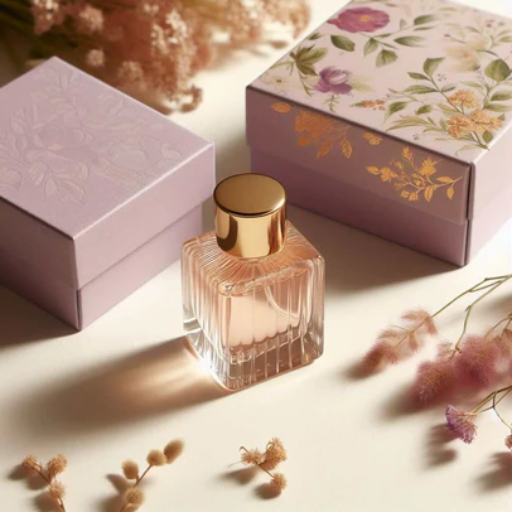
Packing, being a true devil on purism, must be functional and aesthetic. Its primary function is to keep the product out of the harming elements such as light, heat, and humidity, all of which can collectively diminish the fragrance over time. The package, in terms of appearance, works to communicate the brand identity and stir feelings that are appropriate for the fragrance itself. Major components include the highest quality materials (glass) to achieve not only durability but also an eye-catching design; and a bottle design precise enough to dispense the parfum practically and an outside packaging which is not only structurally sound but strikingly beautiful to captivate the consumer. Hence, effective perfume packaging must be a clever mix of utility and glamour that adds to the overall feel of using it.
The Importance of Packaging in the Perfume Industry
The packaging is a truly integral factor in the perfume industry, holding more weight than just that of sheltering the product; it offers the first ever experience to the fragrance user. I found that packaging can influence consumer behavior by creating an imprint and providing brand identity according to the best studies available. The choice of materials is essential not just for their technical function of protecting the perfume but for creating the feel of prestige and luxury. Once again, hence should come into the consideration of functionality in such a design: An impeccable-shaped bottle will enhance the use of the fragrance, supposing all rules of good taste are respected. Outer packaging, though, ranks secondary compared to creating the story of the adorn of the brand and presenting a practical side. With good packaging, customers feel appreciated and, in turn, will pay more for a fragrance.
Different Types of Perfume Packaging
Different types of perfume packaging include glass bottles, metal containers, plastic bottles, rollerballs, travel-sized bottles, refillable containers, and sample vials.
|
Type |
Material |
Size |
Functionality |
Sustainability |
|---|---|---|---|---|
|
Glass bottles |
Glass |
Various |
Durable |
Recyclable |
|
Metal containers |
Metal |
Compact |
Lightweight |
Reusable |
|
Plastic bottles |
Plastic |
Lightweight |
Cost-effective |
Non-biodegradable |
|
Rollerballs |
Glass/Metal |
Portable |
Easy application |
Reusable |
|
Travel-sized bottles |
Glass/Plastic |
Small |
Convenient |
Refillable |
|
Refillable containers |
Glass/Metal |
Various |
Eco-friendly |
Reusable |
|
Sample vials |
Glass/Plastic |
Tiny |
Single-use |
Disposable |
Materials Used in Perfume Packaging
Various materials are used in perfume packaging to find a balance between usefulness, beauty, and environment-friendly traits. Glass, being extremely strong and impermeable, is a major choice as it ensures a premium look to it. It preserves the fragrance well and can also be recycled and reused. Metal is often used in the manufacture of the caps and decorations because it is strong and resistant to corrosion. Plastic is used very commonly in modern packaging for its light nature and cheap manufacturing processes, especially for travel packages or those that are meant to be disposed of after first use. Now, that is also becoming an increasing concern-a genuine environmental concern. Hence, a lot of manufacturers are turning to refillable and birds-and-bees packaging, using biodegradable components, recycled plastics, and sustainable glass or metal alloys. In that sense, materials sciences, in general, are on the frontier cuts of innovation within the industry today.
Innovative Designs in Perfume Boxes
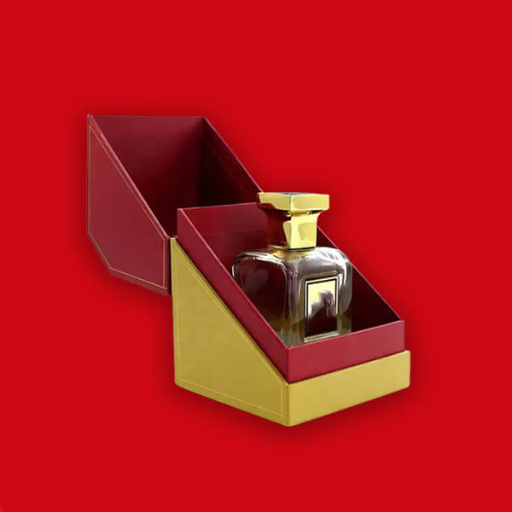
Modern trends in fragrance box design prioritize the synchronization of functionality with aesthetics on account of evolving tastes of the consumer. Several are now leaning toward eco-friendly materials such as kraft paper or recycled cardboard- hence minimizing environmental pollution, which remains sufficiently sturdy. Embossing provides more artistic moisture to the font design, metallic foiling glints and catches attention, or UV spot coating has more dramatic color contrasts that call attention to the luxury feel. Alternatively, modular and refillable packaging solutions have made their return-to-the-point for their user-friendliness and sustainability advantage. Smart technologies that can allow for a QR Code or NFC tag can thus be put in place to share the consumers’ interest in product origins, authenticity, and environmental certifications, marrying immediacy with consumer interaction.
Trends in Luxury Packaging Design
Modern days in luxury packaging design are further stressing sustainability, innovation, and personalization. Materials that are sustainable-have biodegradable and recycled options-are peculiar being adopted actively, with the intention of being in harmony with customer values on environmental issues. On the other hand, great technologies, like augmented reality packaging and embedded smart sensors, are turning around the customer interaction to give them an immersive experience and an informed description of the products in detail. Additionally, hyper-personalized designs produced through customized packaging options and singular design grammar will keep on challenging the concepts of exclusivity and cater to the preferences of individual consumers, giving them an eagerness to keep distancing the brand from others in the market.
Custom Packaging Solutions for Perfume Brands
Designing custom packaging solutions for perfume brands, I approach it with an emphasis on aesthetic value, functional utility, and sustainability. Following recent trends would allow me to design packages that translate the sophistication of the brand with an ecologically responsible message. For instance, using technically recyclable materials projects the sustainability of the brand, and hence meets consumer demands. Interactive components such as a QR code might be included to deliver the story behind the fragrance or to pop an option of customization. Finishing techniques, including embossing, foil stamping, and intricate detailing, are applied to exude exclusivity, ensuring that the packaging is as beautiful and compelling as the scent encapsulated within. My approach is heavily influenced by emerging trends and technologies in the packaging market, fashioning state-of-the-art packaging solutions to cater to perfume brands.
Magnetic Closure Perfume Boxes: A Contemporary Choice
Magnetic closure boxes for perfumes offer a very modern take on packaging that is deemed highly secure and luxurious to touch and feel. From research and industry insights gained, I find such boxes to be almost perfect in protecting fragile perfume bottles and giving its customers a very memorable unboxing experience. This magnetism increases the durability even further while the top-notch material with custom finishes raises the perception of brand value and enhances the presentation of the product. An extremely attractive and distinguished alternative that fulfills the current market demand for premium yet eye-catching perfume packaging.
Sustainable Practices in Parfum Packaging
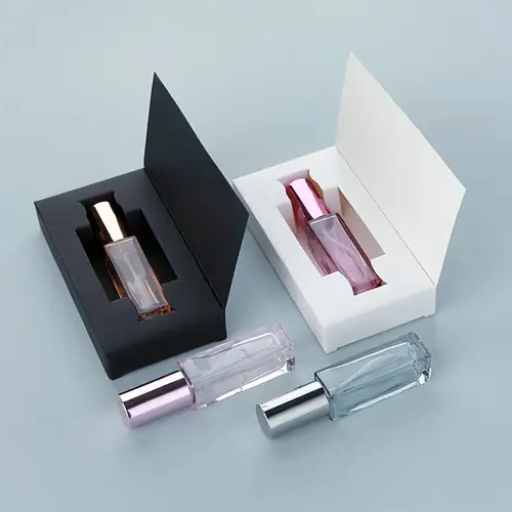
Parfum packaging achieves sustainability through the use of green materials, waste reduction, and recyclable or biodegradable packaging components. More brands are adopting glass bottles with minimal plastic use and cardboard outer packaging made from recycled paper, thereby also cutting costs and avoiding unnecessary paper inserts. The refill system for perfume bottles and the use of plant-based ink in printing are also innovations that contribute toward environmental objectives. In this way, organizations find they lessen their environmental burdens as well as satisfy consumers’ demand for environmentally friendly products.
The Shift Towards Eco-Friendly Materials
For eco-friendly materials, industries have been consciously shifting due to environmental concerns and changing consumer preferences. Best practices now include shifting to biodegradable, compostable, and renewable materials that include bamboo, cornstarch-style products, and paper-based materials to reduce waste and pollution. Organizations have also been promoting new recycling technologies that enable them to reuse existing materials such as ocean plastics, post-consumer waste, etc. Regulations and certifications recognizing sustainable and transparent processes, such as FSC, Cradle to Cradle certification, etc., are gaining importance in guiding materials sourcing and production. Such efforts have their collective impact on minimizing environmental degradation and propelling corporate enterprises towards global sustainability goals.
Benefits of Sustainable Packaging for Brands
1.Brand Reputation Enhancement – Sustainable packaging adoption improves brand image among environmentally conscious consumers, furthering brand loyalty and trust.
2.Regulatory Compliance – Using sustainable materials means operating within the confines of the ever-changing government regulations and international standards. This helps avoid risks such as legal penalties or suspension due to non-compliance.
3.Cost Efficiency Over Time– Although at the beginning, the implementation of sustainable packaging is very costly, in the long run, if reuse of materials, lesser expenses of waste management, better operational efficiencies are achieved, overall costs will go down.
4.Market Differentiation– Sustainable packaging helps the brand distinguish itself from other companies competing in the market, thus favoring values of today’s consumers for innovation and responsibility.
5.Environmental Impact Reduction– With lesser resource consumption, waste generation, and carbon footprints, sustainable packaging maintains the level of corporate social responsibility initiatives and global ecological conservation agenda.
The Psychology Behind Packaging Design
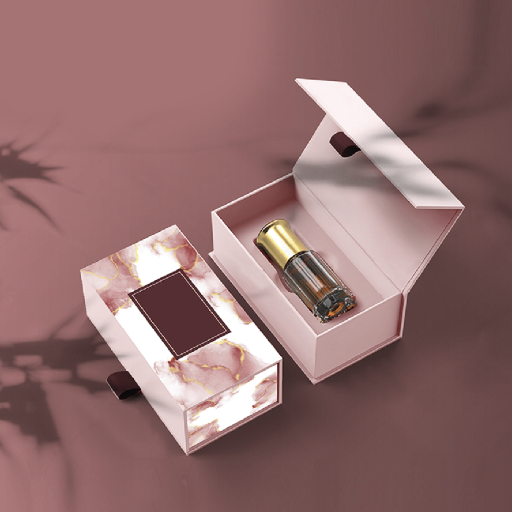
Packaging design has a significant impact on consumer behavior and decision-making. Color, typography, shape, and visual hierarchy lay the foundation for an emotional response, thus creating brand recognition. Bold and bright colors will, for example, communicate energy and vibrancy, whereas clean and simple designs often speak of simplicity and class. Touching textured packaging or special finishes gives the customer additional cues of quality in their purchase decisions. Transparency in communication also helps by presenting a neat and neat picture of a design, nurturing consumers’ trust and recall. When well set together, these elements help in attracting attention, building trust, and creating emotional connections between consumers and brands.
How Colors Influence Consumer Perception
Colors play an important role in shaping consumer behavior and perception by associating psychological and emotional triggers. Researchers suggest that within ninety seconds of initial viewing of a product, people form a subconscious judgment, with as much as ninety percent of that being influenced just by color. For instance, warm colors-great for signals of excitement, hurry, and passion-get fired up on clearance sales and fast-food branding. Meanwhile, cold tones are identified by institutions like finance and health with trust, reliability, and calmness.
Cultural context also influences color interpretation and, therefore, may provide some varied interpretations from one region to another. White, for instance, means purity in Western culture, which stands for mourning to some Eastern culture. Colour use is also affected by industry-specific trends; for instance, the tech sector prefers a clean, minimalist color scheme dominated by blues and grays because they are associated with innovation and professionalism.
With a thorough understanding of these principles, brands can make informed choices concerning color combinations that will appeal to their target audience, thus aligning the colors with their intended messages and eventually enhancing overall perception of the brand.
The Role of Shapes in Attracting Consumers
Shapes reinforce consumer impressions and sway decision-making. Curved lines evoke harmony, unity, and friendliness, thus making them effective for brands that wish to acquire emotional connections. In contrast, angular lines convey stability, therefore strength, and efficiency, and appeal to industries that wish to uphold professionalism and trustworthiness. Abstract and irregular shapes express one view of creativity and uniqueness, which, in turn, suit art, designing, or innovative industries. By using particular shapes in logos, products, and marketing material, strategically advertising companies will amplify the attributes of the brand they want to project and establish an everlasting impression on their consumers.
Brand Identity and Packaging Cohesion
Maintaining brand and packaging cohesion is crucial when it comes to establishing a strong, and therefore, consistent, identity for an image. The very top-ranking websites maintain that the packaging should be so good that it coincides well with the underlying value system, visuals, and message of the brand itself. This implies using the handsome logos, relevant fonts, and color schemes that represent the character of the brand and speak loudly to the audience in contest. Packaging is treated as a brand identity; it affects how consumers judge and recall the brand. Packaging based on green items would become an immediate enhancement for that particular brand in the eyes of the conscious buyers. In Contrast, a well-going brand would be well adequately branded so that every attribute becomes the representation of the brand through its packaging, fostering goodwill.
Customizing Your Perfume Box for Gifting
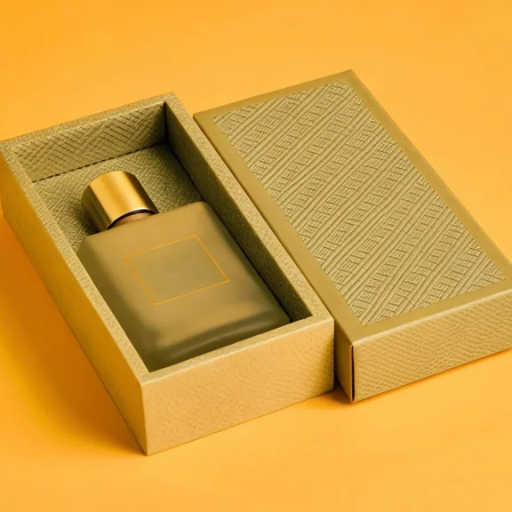
Every perfume box is special when given as a gift. A beautiful gift box has to walk the delicate line of visual appeal versus a personal touch. Consider embellishing your gift box with elegant designs, such as embossed patterns, metallic finishes, or maybe even window cutouts that allow a glimpse of the product. Personalization options, such as monograms or inscriptions, may impart sentimental value. Going for eco-friendly methods to package the product not only adheres to sustainable methods but puts forth a premium product image. Also, creative extra touches such as ribbons, decorative seals, or an accompanying fragrance card can sing praises of the gifting experience while cementing the brand’s identity for detail.
Gift Packaging Trends in the Perfume Market
Based on my research, some of the top trends in perfume gift packaging revolve around sustainability, customization, and novel designs. Sustainability has, of late, risen as one of the highest priorities for consumers bent on eco-consciousness, inclining brands to seek recyclable or biodegradable packaging material options. Customization still holds sway as a crucial differentiator, with brands promoting personalized designs and engraved bottles as well as tailored messages to maintain a heightened level of emotional engagement. Growing attention is also being paid toward multifunctional packaging that sees boxes being used as storage or display cases-from-the-point-of-view-practicality considered along with aesthetics. These trends dictate that providing luxury with a slice of responsibility and personalization is the way forward in giving a face to an increasingly demanding consumer.
Designing Custom Gift Boxes for Special Occasions
Designing custom boxes for special occasions demands that equal emphasis be placed on practicability, aesthetics, and personalization. Leading websites insist on balancing the act between visually enticing design on one hand with the usefulness of packaging on the other to ensure that packaging complements the gift without becoming a distraction in itself. Materials would have to coordinate well with the theme of the occasion, be it classy textures for weddings or cheerful prints for birthdays. The inclusion of sustainable, eco-friendly options is fast becoming critically important, all due to the consumer becoming more forward-thinking in environmental perspectives. Personalization still stands at the center, with customization through messages, shapes, or schemes tying everything down with a distinct label, making it feel special to the recipient on a deep level.
Gift Box Ideas for Eau de Parfum
The design of the gift box for eau de parfum should straddle aesthetic appeal and functionality, as well as being personalized. Giving velvet-lined or satin-padded interiors that lovingly cradle the bottle could say opulence. Materials such as recycled cardboard or bamboo score points as they marry elegance with eco-consciousness-just what the modern consumer prefers. The décor could go the way of laser-etched designs, metallic foiling, or embossing of logos to amplify the feeling of exclusivity. Promoting the gift box experience with little scented candles, body lotions, or travel-size perfume sprays could create a worthy contender for the recipent’s memory. Also, adding a personalized note card or engraving the recipient’s name on the gift box takes the generous thought one step further into the heart of the presentation.
Reference Sources
-
The Art of Luxury Perfume Packaging: A Deep Dive into Maison Francis Kurkdjian’s Design Excellence – This article explores the engineering and design excellence behind luxury perfume packaging.
-
Unboxing the Essence of Elegance: Discover the Art of Perfume Packaging – A detailed look into the secrets and brands that have mastered the art of perfume packaging.
-
Perfume Box Packaging: A Perfect Fusion between Arts and Engineering – This blog explains how artistry and engineering combine to create customized perfume box designs.
-
Top Trends in Perfume Packaging Design Ideas – An overview of emerging styles and trends in perfume packaging for 2025.
-
Perfume Packaging: Design Trends and Creative Innovations – Insights into the latest trends, from minimalist luxury to playful creativity in perfume packaging.
Frequently Asked Questions (FAQ)
Q:What is parfum packaging, and why is it important?
A:Parfum packaging refers to the design and materials adopted to contain and protect perfume products. Packaging plays a pivotal role in safeguarding the perfume bottle; it also has the trick of branding and influencing customer purchases. A luxurious packaging box totally adds to the allure of the fragrance as an idea or for a personal purchase.
Q:What are some advantages of having a luxury perfume packaging box?
A:Luxury packaging boxes elevate the product’s appeal through sophistication and grace. They are crafted using premium materials such as rigid cardboard or luxury paper, which ensure protection for the perfume and creates an aesthetic presentation setting for it. This type of packaging thus adds value to the customer’s entire experience and proves apt for high-end brands.
Q:How do I customize my perfume packaging box?
A:You can customize your perfume packaging box by selecting unique shapes, sizes, and materials. Add your logo or utilize hot stamping for detailing. You can also select colors and finishes that represent your brand. This allow for a special and memorable unboxing experience for the customer.
Q:What types of materials are used in the perfume packaging?
A:Some of the materials commonly used in perfume packaging are cardboard paper, luxury paper, glass, and rigid materials. Cardboard packaging is well-appreciated for being environmentally friendly and cost-effective, whereas glass perfume bottles provide the feel of something premium. Each of these materials enhances the packaging’s appeal or functionality.
Q:What is the difference between wholesale and retail perfume packaging?
A:Wholesale perfume packaging simply refers to bulk purchase options used by retailers or manufacturers to stock their products, usually at a lower price per unit. Retail packaging, on the other hand, identifies packaging units for individual presentation and sale, usually graced with additional branding elements or luxury appeal. A keen understanding of the differences will allow a business to choose wisely on its packaging strategy.
Q:Can I use empty luxury packaging for my products?
A:Yes. Empty luxury packaging is one such way of marketing a product where even if a product itself is not a high-end perfume, it may appear to be one. Empty luxury boxes are a green option that can be recycled or repurposed for different products. They may also double as attractive gift packaging for a plethora of occasions.
Q:What are some imaginative ways to package gift boxes?
A:Creative packaging ideas for gift boxes include using unique shapes like cylinders or drawers, adding decorative elements such as ribbons or custom labels, and incorporating interactive features like magnetic closures. These ideas elevate the unboxing experience, making the gift even more special for the recipient.
Q:How do I select the perfect size for the perfume bottle packaging?
A:The choice for sizing the perfume bottle packaging depends on the fragrance volume offered: 30 ml or 50 ml. Apart from the packaging being attractive, a little emphasis should also go into the packaging being of great design, providing adequate protection to the bottle, as well as being easy for the consumer to grasp and display on a retail shelf.

